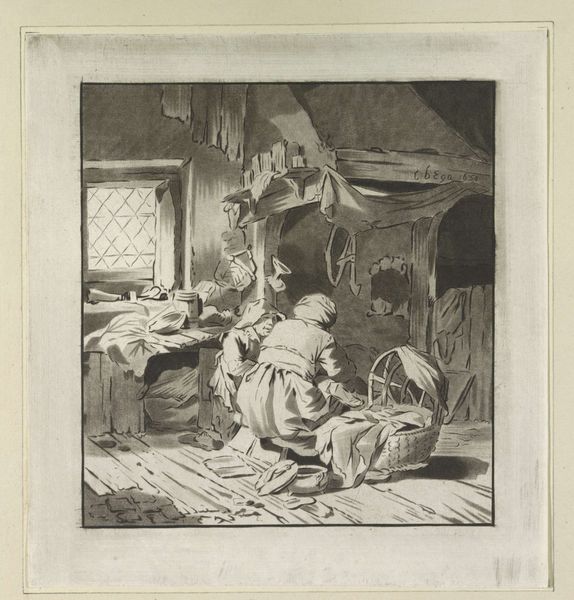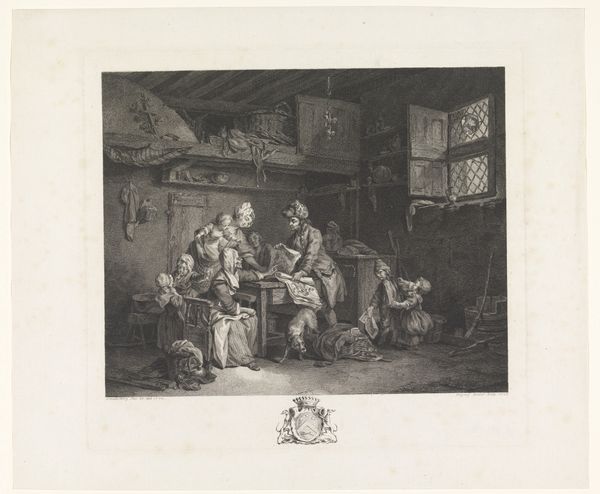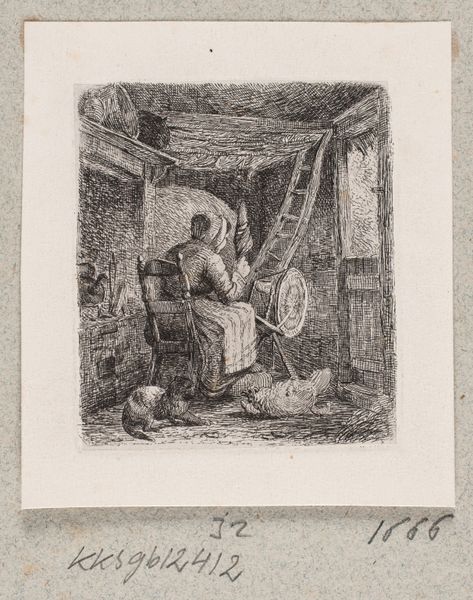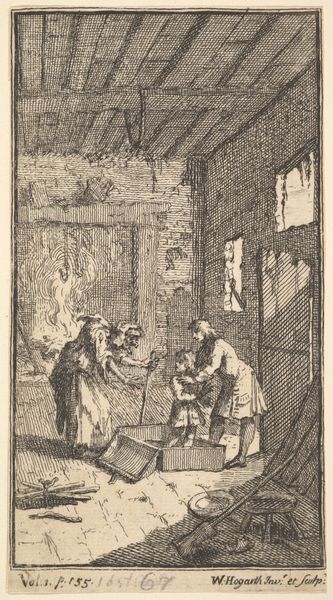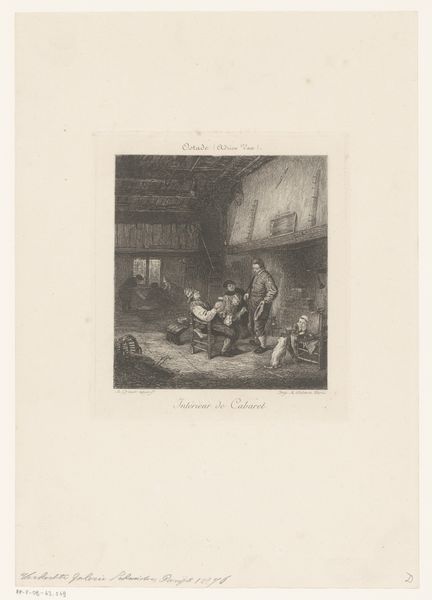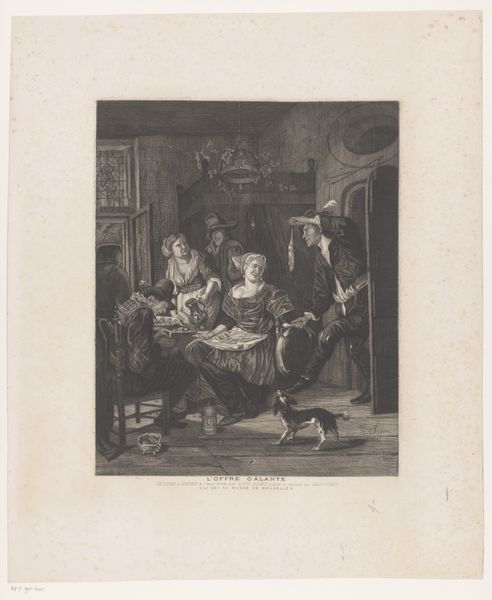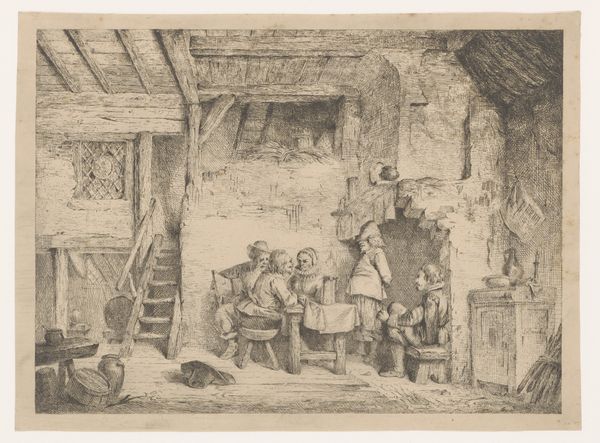
Dimensions: height 224 mm, width 171 mm
Copyright: Rijks Museum: Open Domain
Curator: Here we have Robbert Muys's engraving, "Boereninterieur", created in 1761. The work, now residing at the Rijksmuseum, offers a glimpse into the life of a rural family. Editor: My first impression is one of striking detail within this modest interior. The stark black and white amplifies the contrast in textures, from rough wood to the finely rendered faces of the figures. Curator: Absolutely. The composition guides our eye through the scene, noting the placement of figures—each engaged in their task—in relation to the central fireplace and surrounding objects. The lines of the beams also emphasize the room’s geometry. Editor: Beyond the structured layout, let’s consider the laborious act of producing an engraving like this in 1761. The hours of skilled hand-work required to carve these miniscule details, the economy of image making, that feels crucial. How was this image made to be consumed, distributed, and understood by audiences? Curator: That's precisely what the baroque elements evoke, no? An attention to the intricate nature of reality reflected by the means and craft necessary to depict it. Editor: Precisely! And the realism is hard-won in that sense, emerging directly from the handwork. You see it, for example, in the worn wooden floor. Curator: Or the details of the hearth—such precise delineations giving the impression of daily use. These careful depictions act to both ennoble rural life and render it understandable to city dwellers. Editor: True, there's a clear attention paid to documenting the space and practices. By recognizing that these skills have an important place within an artistic economy, this artwork acts against traditional high and low art distinctions. Curator: The work successfully embodies aspects of figuration and genre painting—a perfect demonstration of realism through formal elements. The arrangement lends gravity. Editor: Considering the image now, it speaks not only to the visual composition, but to the broader system of labor, skill, and production inherent to its creation and cultural use. It reminds me about how art connects with broader culture in specific historic places and moments. Curator: I'm reminded of the ways simple structure gives lasting emotional and even sociological understanding to an otherwise ordinary genre scene. Thank you for calling this to mind.
Comments
No comments
Be the first to comment and join the conversation on the ultimate creative platform.
